Gold mining in Southern Rhodesia (modern Zimbabwe) has evolved through distinct historical epochs, each marked by unique geological settings, mining technologies, and economic drivers. This narrative, steeped in rich geological detail, showcases a legacy of ancient workings, pioneering exploration, and large‐scale modern operations.
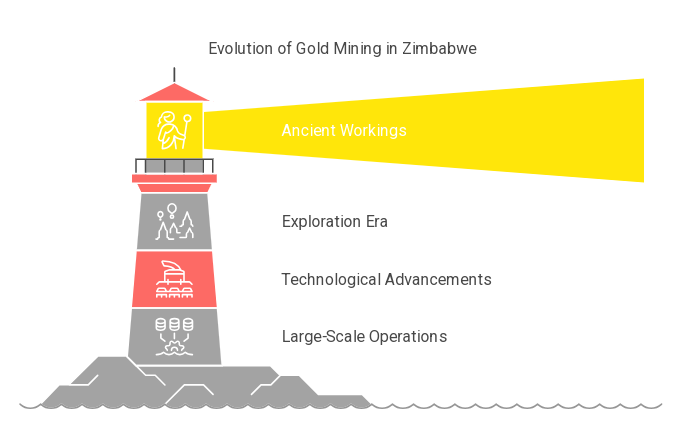
1. Historical Overview
- Ancient Workings and Early Exploration:
- Early Observations:
- European explorers such as Carl Mauch, Henry Hartley, and Thomas Baines documented extensive ancient mining workings.
- Limited Impact:
- These early, rudimentary operations—trenching, pitting, and shallow surface mining—did not significantly alter the country’s mineral wealth but later served as indicators of mineral potential.
- Initial European Mining:
- Tati Concession (1863):
- The first modern mining operation, which ultimately proved unsuccessful.
- British South Africa Company Expeditions:
- Following gold discoveries, the company secured a Royal Charter in 1890 (later revoked), leading to the establishment of regular production at the Cotopaxi and Dickens mines in 1894.
- Early 20th Century Growth:
- Peak Production:
- The early 1900s saw dramatic growth, with 1916 reaching a record production of 28.94 tonnes (over 900,000 ounces) of gold.
- Expansion:
- A surge in exploration led to many mines being pegged, with a few large producers contributing up to 70–80% of total output.
- Post-Peak Fluctuations:
- Decline and Variability:
- After the 1916 peak, production declined until around 1930, marked by inconsistent output and the abandonment of several mines.
- Ongoing Importance:
- Despite these fluctuations, gold mining remained a cornerstone of the region’s economy.
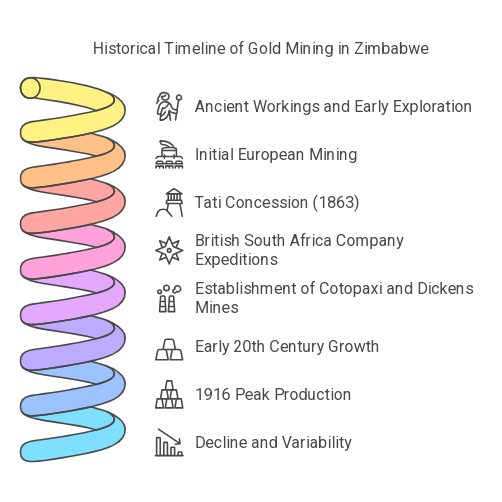
2. Geological Context and Mineral Associations
- Host Rock Environments:
- Gold deposits were predominantly found within ancient metamorphic terrains:
- Schist Belts:
- Composed of greenstones, talcose schists, and other metamorphic rocks. Gold commonly occurs in quartz veins and within the schists themselves, often near granite contacts.
- Banded Ironstone Formations (BIFs):
- Alternating iron-rich and silica-rich layers, sometimes hosting gold either directly or in quartz veins.
- Pyritic Impregnations:
- Gold may occur as free particles or be locked within pyrite, arsenopyrite, and pyrrhotite.
- Types of Gold Ore:
- Quartz Veins:
- Often lenticular in shape, with widths ranging from a few inches to three feet.
- Complex Mineral Associations:
- Gold is typically found alongside minerals such as pyrite, arsenopyrite, galena, chalcopyrite, and stibnite.
- Mining Methods:
- Early mining was largely manual—employing shafts, inclines, and adits—progressing to both open cast and underground techniques. Ore processing evolved from crushing and milling to amalgamation and cyanidation.

3. Case Studies: Three Iconic Mines
The Cam and Motor Mine
- Geological Setting:
- Located in the Hartley district, it is set within the Precambrian Basement Schists and greenstone belts.
- Gold is primarily hosted in lenticular quartz veins within sheared schist, often accompanied by pyrite.
- Production Highlights:
- Recognized as the largest gold mine in the colony, it led production until the early 1950s.
- Cumulative output reached 3,708,717 ounces (approximately 147.2 tonnes), setting a historical benchmark in Rhodesia.
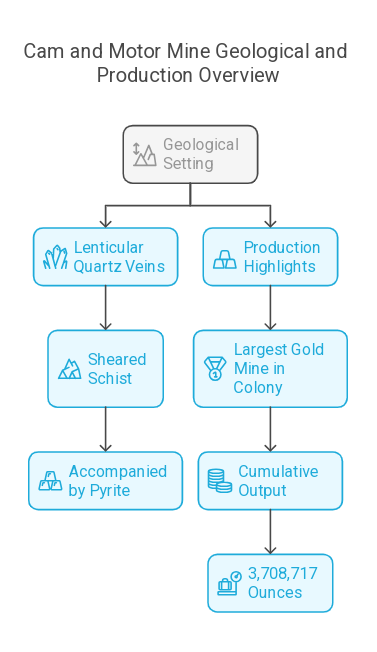
The Globe and Phoenix Mine
- Geological Setting:
- Situated in the Que Que area within the Rhodesdale Batholith and associated basement schists.
- Gold mineralization is found in irregular quartz veins, often linked with banded ironstone and pyritic associations.
- Production Highlights:
- A major operation since the early 1900s, it surpassed the Cam and Motor mine by 1951.
- Total cumulative production is estimated at 122.9 tonnes of gold, with notably high ore grades.
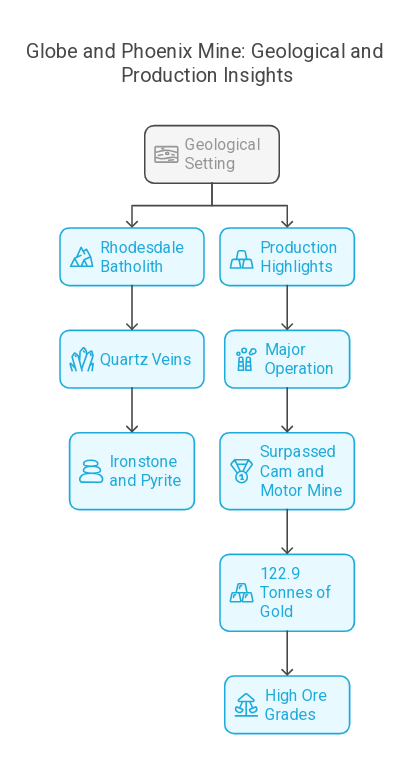
The Shamva Mine
- Geological Setting:
- Located in the Shamva area, within the Shamvaian sequence of volcanic and sedimentary rocks.
- Gold is concentrated along ENE–WSW trending shear zones in quartz veins and stringers; lodes dip between 20° and 70°.
- Production Highlights:
- Known as one of the larger, more consistent producers, it has a cumulative output of 55.9 tonnes.
- Its deposits are characterized by wide, continuous ore bodies with quartz reefs and pyritic impregnations.
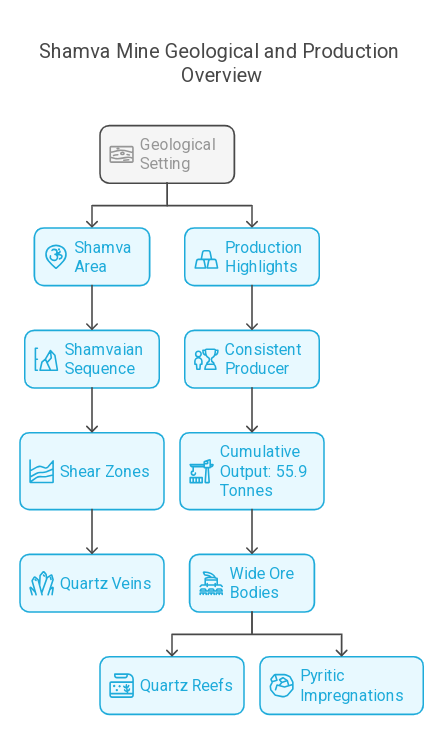
4. Overall Significance
- Geological Foundation:
- All three mines exemplify the rich, complex geology of the Archaean Craton, with gold deposits hosted in greenstone belts and associated metamorphic rocks.
- Economic Legacy:
- Together, these mines underscore Southern Rhodesia’s status as a historic powerhouse in gold production, a legacy that has shaped both its economy and global reputation.
- Technological Evolution:
- The progression from ancient, rudimentary workings to sophisticated modern mining techniques mirrors broader technological and economic trends.
- Exploration Insights:
- The varied geological settings—from quartz veins to banded iron formations—offer a roadmap for future exploration, emphasizing the importance of integrating structural, lithological, and geochemical data.
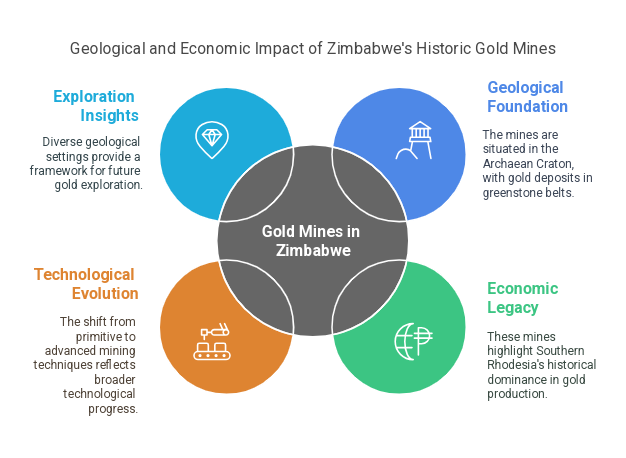
In Summary
Gold mining in Southern Rhodesia is a saga of enduring legacy and geological complexity:
- Historical Cycles:
- From ancient workings observed by early explorers to modern high-output mines, the region has witnessed cycles of exploration, growth, and fluctuation.
- Geological Diversity:
- Gold deposits occur in quartz veins, schist belts, banded iron formations, and pyritic zones, each shaped by the craton’s ancient tectonic and metamorphic history.
- Iconic Mines:
- The Cam and Motor, Globe and Phoenix, and Shamva mines serve as prime examples of how geology, structure, and innovative mining practices converge to unlock vast mineral wealth.
- Lasting Impact:
- This rich heritage continues to influence both local economies and the broader global mining industry.
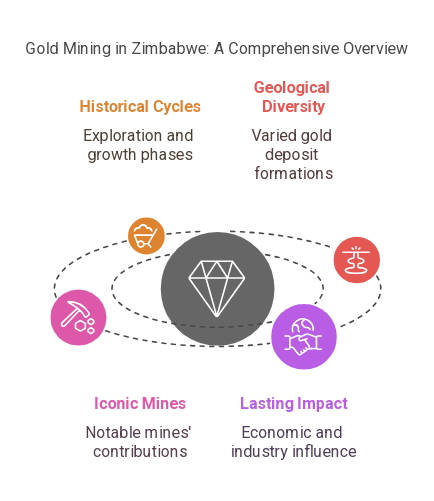
References:
(General geological and historical data for Zimbabwe)
(Regional structural and stratigraphic studies)


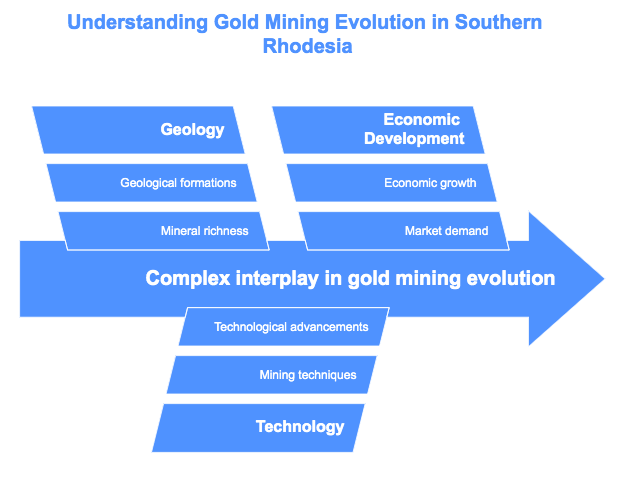
Comments ()